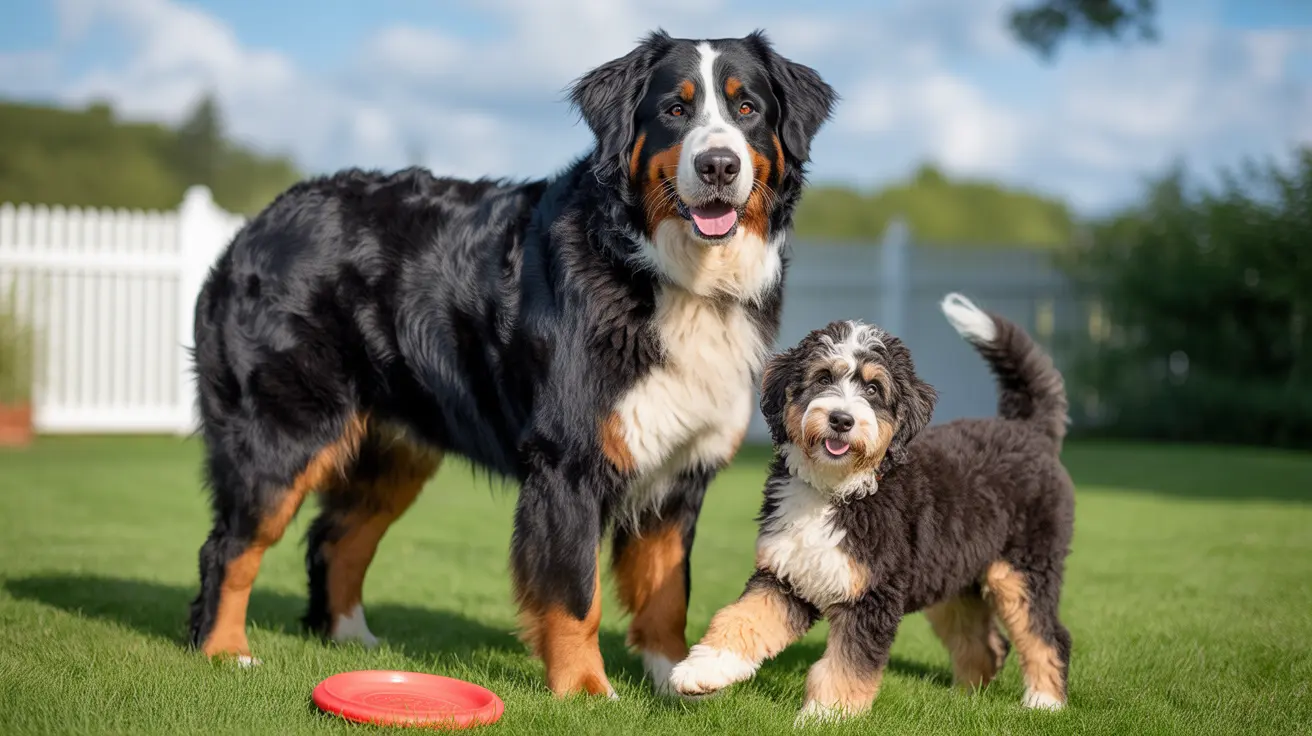Mini Bernedoodles have become increasingly popular as family pets, thanks to their manageable size and lovable personalities. If you're considering adding one of these charming designer dogs to your family, understanding their growth patterns and adult size expectations is essential for proper care and preparation.
In this comprehensive guide, we'll explore everything you need to know about Mini Bernedoodle sizes, from puppy growth milestones to adult dimensions, helping you make informed decisions about this delightful breed.
Adult Size and Weight Range
Mini Bernedoodles typically reach a height of 18 to 22 inches at the shoulder when fully grown. Their adult weight generally falls between 25 to 50 pounds, though most commonly settles in the 25-45 pound range. This makes them an ideal medium-sized dog that's neither too large nor too small for most living situations.
It's important to note that size can vary significantly among individual dogs, primarily due to genetics and breeding practices. First-generation (F1) Mini Bernedoodles may show more size variation than multi-generational breeds.
Growth Timeline and Development Stages
Mini Bernedoodles follow a predictable growth pattern, though individual dogs may develop at slightly different rates:
- Newborn: 1-2 pounds, 3-4 inches tall
- 2 months: 6-10 pounds, 6-8 inches tall
- 4 months: 12-18 pounds
- 6 months: 18-22 pounds
- 8 months: 23-30 pounds, 14-17 inches tall
- 12 months: 25-40 pounds, 16-20 inches tall
- 14+ months: Final adult size
Factors Affecting Final Size
Several key factors influence how big your Mini Bernedoodle will get:
Genetics
The size of parent breeds plays the most crucial role in determining adult size. Breeders typically use Miniature Poodles and carefully selected Bernese Mountain Dogs to achieve the desired mini size range.
Nutrition
Proper nutrition during the growth phase is essential for healthy development. High-quality puppy food formulated for medium-sized breeds helps ensure optimal growth without excessive weight gain.
Exercise and Activity
Appropriate exercise helps build healthy muscle mass and maintain ideal weight. However, overexertion during the growth phase should be avoided to prevent joint issues.
Size Comparison with Other Bernedoodle Types
To put Mini Bernedoodles' size in perspective, here's how they compare to other Bernedoodle varieties:
- Standard Bernedoodles: 61-100+ pounds, 23-29 inches tall
- Medium Bernedoodles: 36-50 pounds, 18-21 inches tall
- Mini Bernedoodles: 25-50 pounds, 14-22 inches tall
- Toy/Micro Bernedoodles: Under 20 pounds, 12-17 inches tall
Frequently Asked Questions
How big do Mini Bernedoodles typically get in height and weight when fully grown?
Mini Bernedoodles typically reach 18-22 inches in height and weigh between 25-50 pounds when fully grown, with most falling in the 25-45 pound range.
At what age do Mini Bernedoodles usually stop growing in height and reach their adult size?
Most Mini Bernedoodles stop growing in height around 11-12 months of age, though they may continue to fill out and gain muscle mass until 14-16 months.
What factors influence the final adult size of a Mini Bernedoodle?
The main factors affecting adult size are genetics (parent breeds), nutrition, exercise, and overall health during the growth phase. Breeding practices also play a significant role.
How can I estimate my Mini Bernedoodle puppy's adult size during their growth stages?
A common method is doubling the puppy's weight at 16-18 weeks of age. However, growth charts and regular vet check-ups provide more accurate predictions.
How do Mini Bernedoodles compare in size to other Bernedoodle types like Standard or Toy Bernedoodles?
Mini Bernedoodles are smaller than Standard Bernedoodles but larger than Toy varieties, making them a perfect middle-ground option for families wanting a moderately-sized dog.
Conclusion
Mini Bernedoodles offer a wonderful size option for families seeking a medium-sized dog with the beloved characteristics of both Bernese Mountain Dogs and Poodles. While their final size can vary, understanding the typical growth patterns and factors affecting development helps ensure proper care throughout their growth phases.
When choosing a Mini Bernedoodle, work with reputable breeders who can provide detailed information about parent sizes and growth expectations. This preparation will help you provide the best care possible for your new furry family member.






